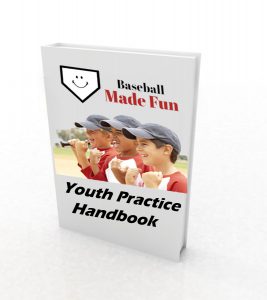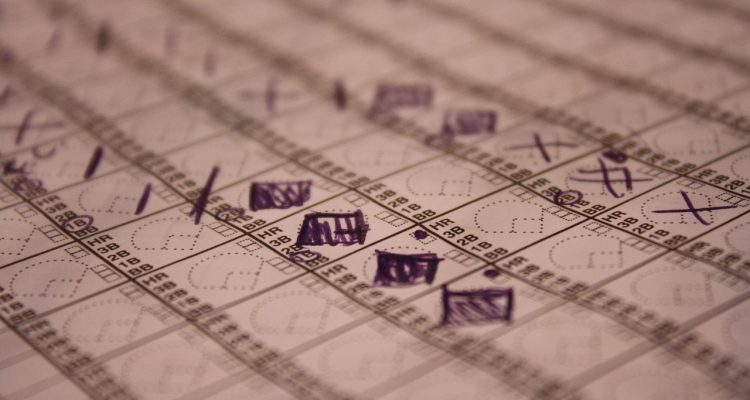The best baseball batting order strategy for your youth team is probably going to be a bit different from your average Major League baseball team. American League managers have the luxury of having professional hitters one through nine in their lineup, National League managers one through eight (sorry pitchers). They also have multiple professional hitters on the bench that they can bring in at any given moment to pinch hit.
The average youth team out there has, obviously, a much different make-up. Whether you are a little league, high school, or travel coach, the optimal batting order for your team will be very individualized to your players’ abilities.
Building the Optimal Batting Order for Your Team:
The Top of the Order
Table setters. That is what you are looking for at the top of the order. These are hitters who set the table for the “heart of the order.”
1st Batter: The “Leadoff Man.” Low strike outs, a high on base percentage, and speed is what we are looking for here. The leadoff man’s role is to get on base and score as many runs as possible. They should be an intelligent baserunner, and ideally be able to steal bases.
2nd Batter: We are looking for another high on base percentage hitter, that can handle the bat. The idea is the lead off hitter gets on, then the #2 hitter sets the table for the middle of the lineup. The #2 hitter’s role is to either get on base himself, or move the lead off man into scoring position so that the #3, 4, 5 hitters can drive him in. The #2 hitter will be someone who can situational hit. They are usually hitters who can bunt, hit and run, or hit a ball to the right side of the field to move a runner to 3rd base.
The Heart of the Order
Run producers. The next 4 hitters should be the guys you can count on to knock runners in on a regular basis.
3rd Batter: The 3 hole hitter is typically your best overall hitter. It will be someone who hits for a high batting average, has a high on base percentage, drives runs in, strikes out very little, and has great at bats on a regular basis.
4th Batter: The “Cleanup Man” is usually the hitter with the most power on the team. RBIs, RBIs, RBIs!!! That is the role of the cleanup hitter, drive in as many runs as possible.
5th Batter: The 5th hitter, still considered the heart of the batting order, should be another hitter that has power or the ability to drive the ball on par with your #3 and #4 hitters. Their role is to drive in any runs that the other two “heart of the order” guys do not.
6th Batter: This can be the next in line as far as run production goes. If you have a hitter who is not quite as consistent as your #3, 4, and 5 guys, but still can drive some balls into the outfield and drive a runner in, this is a good spot for him.
The Bottom of the Order
This is the most difficult and strategic area of the batting order to manage.
Here are a few strategies to help get the most out of the bottom of the order:
- Split up low on base percentage hitters to avoid multi-inning lulls in offensive production.
- Back up low on base percentage hitters with hitters who can steal bases. If a base stealer reaches first base with two outs, they can quickly get into scoring position by stealing 2nd.
- Know who can bunt. If you have someone who is not necessarily a top of the order hitter, but they are a great bunter, put them in the last spot in the order. They can jump start an inning for the top of the lineup by bunting for a hit or bunting a baserunner into scoring position.
Strategizing the Use of EHs
Hopefully you are getting most of your hitters into the batting order each day. If you are, most likely you are using EHs (extra hitters) when it is allowed by rules. This means your batting order will consist of more than 9 hitters.
Here is an example of how to manage the bottom of the order when you have two extra hitters:
The 7th Batter: could be a low percentage power hitter. He may have the ability to hit the ball for a double or even out of the park, but just does not do it with regularity. The idea here is he will at times come up with runners in scoring position since he is backing up the “heart of the order.”
The 8th Batter: could be where you can place your lowest on base percentage hitter.
The 9th Batter: could be a player with some speed and the ability to steal bases.
The 10th Batter: could be where you place your 2nd lowest on base percentage hitter.
The 11th Batter: could be your best bunter that can set the stage for the top of the order. An additional option is to put a scrappy, speedy player in this spot. This is also known as the “double leadoff” strategy.
Playing Match-Ups
At the Major League level, managers will often play match-ups. Typically left-handed pitchers are tougher on left-handed hitters than a right-handed pitcher would be. So a manager might write a lefty heavy lineup when a right-handed pitcher is on the mound, and righty heavy lineup when a left-handed pitcher is on the mound. Managers also tend to split up left-handed hitters in the lineup. The thought behind this is to prevent a dominant left-handed relief pitcher from coming in to face several lefty hitters in a row.
Another factor they consider with match-ups is the hitter’s history against the starting pitcher. If a hitter has really struggled or really dominated against the starting pitcher in past games, this can affect the position of the hitter in the batting order.
At youth levels, match-ups tend to not be as big of a factor. However, know your team. Maybe there is a certain hitter who is very uncomfortable against left-handed pitchers. Be aware of this, and factor it into how you use them in the lineup. If you have already played several games against the team you are playing, factor in your hitters’ past success or lack of success against the starting pitcher.
Coaching a youth team? Take advantage of this limited time offer.
Get our eBook, Youth Practice Handbook for FREE Today!
The Youth Practice Handbook includes:
- 28 pages of detailed information on running youth baseball practices
- 17 Important tips and philosophies on running great practices
- Over 30 Different drills covering: throwing, hitting, infield, outfield, catching and baserunning
- Over 20 different strength/conditioning and warm-up exercises
- Practice Checklist so you have everything covered
- 4 minute-by-minute practice plan examples
[cta_btn color=”danger” size=”” link=”http://eepurl.com/duHGaL” ]Get Your Practice Handbook Now![/cta_btn]



I’m not a baseball coach, I do coach rugby union though. I enjoy taking training tips from other sports, and applying them to my sport.
Good luck to you on this website. I’m sure it will be a huge “hit!”
Francis.
Thanks Francis! Very wise of you to seek advice and tips outside of your specific sport. I love to research across all sports and coaching/leadership platforms. You never know when you’ll come across an “AH HA” moment that applies perfectly to your team or sport. Good luck to you and your team!
This is some good info here! My nephew plays baseball and I have just sent him the link to this blog, I know he will like it. Thanks for sharing this!
Thanks Manika, really appreciate you sharing the site with your nephew! Hope he enjoys it.